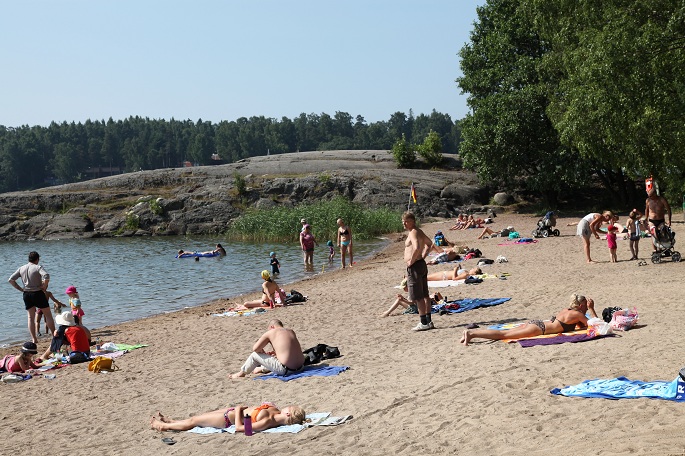Warm June ends with storm gusts
Published : 10 Jul 2020, 17:35
Updated : 11 Jul 2020, 10:17
This June was record warm in about half of Finland’s long-term observation sites, according to the statistics of the Finnish Meteorological Institute.
“The record temperatures focused on the western half of the country, where the deviation from the normal was up to four to five degrees Celsius,” said Meteorologist Pauli Jokinen. The temperatures were closest to the average in northern Lapland and near the eastern border.
In June, a total of 21 hot days were measured in various locations in Finland, which is the highest number of hot days in the age of digitised data, i.e., since 1961. The same number of hot days also occurred in June 1999. The Artukainen station in Turku recorded a total of 17 hot days, which is the highest number of hot days recorded by all the observation stations.
The month’s highest temperature was 33.5 degrees Celsius, which was measured in Niinisalo, Kankaanpää on the 25th. The reading was only three-tenths lower than Finland’s temperature record in June, which was measured in Ähtäri in 1935. The lowest temperature of June this year, -2.6 degrees Celsius, was recorded in Konnunsuo, Lappeenranta, on 2 June.
For long, June was rather dry. Due to the drought, wild and forest fires broke out, especially at the end of the month. The largest of these was in Muhos, where an estimated 250 hectares of forest were burned.
On the last day of the month, the Päivö storm corrected the precipitation situation considerably. Precipitation exceeding 50mm occurred in the area from Uusimaa to Kainuu via central Finland. The highest amount of daily precipitation, 90.8mm, was recorded in Pielavesi at Venetmäki station. The observations recorded in the statistics are from 9a.m. to 9 a.m. of the following day.
In the end, the total precipitation levels in June were lower than the average in the western part of the country, Enontekiö, and north Karelia. For the rest of the country, precipitation levels were either average or higher than average. Punkaharju in Savonlinna had the month’s highest amount of precipitation, 130.6 millimetres. The lowest amount of precipitation, 11.2mm, was measured in the Kilpisjärvi Village Centre.
In June, approximately 22,000 cloud-to-ground lightning strikes were spotted, accounting for about two-thirds of the normal amount.
June ended with an unusually strong summer storm. In the morning of 30 June, the Finnish Meteorological Institute issued a red warning about the storm with more than 25 m/s wind gusts in the eastern part of the country. The low pressure moving over Finland initially boosted the wind in the Gulf of Finland and, during the evening, in the eastern part of the country.
The strongest winds were measured in Ritoniemi, Kuopio, where the average wind was 21.4 m/s and wind gusts 27.4 m/s. More than 25 m/s wind gusts were also measured in the Gulf of Finland, Siilinjärvi, Varkaus, and Liperi. The highest amount of precipitation per hour was 23.3mm, measured in Pyhtää.


